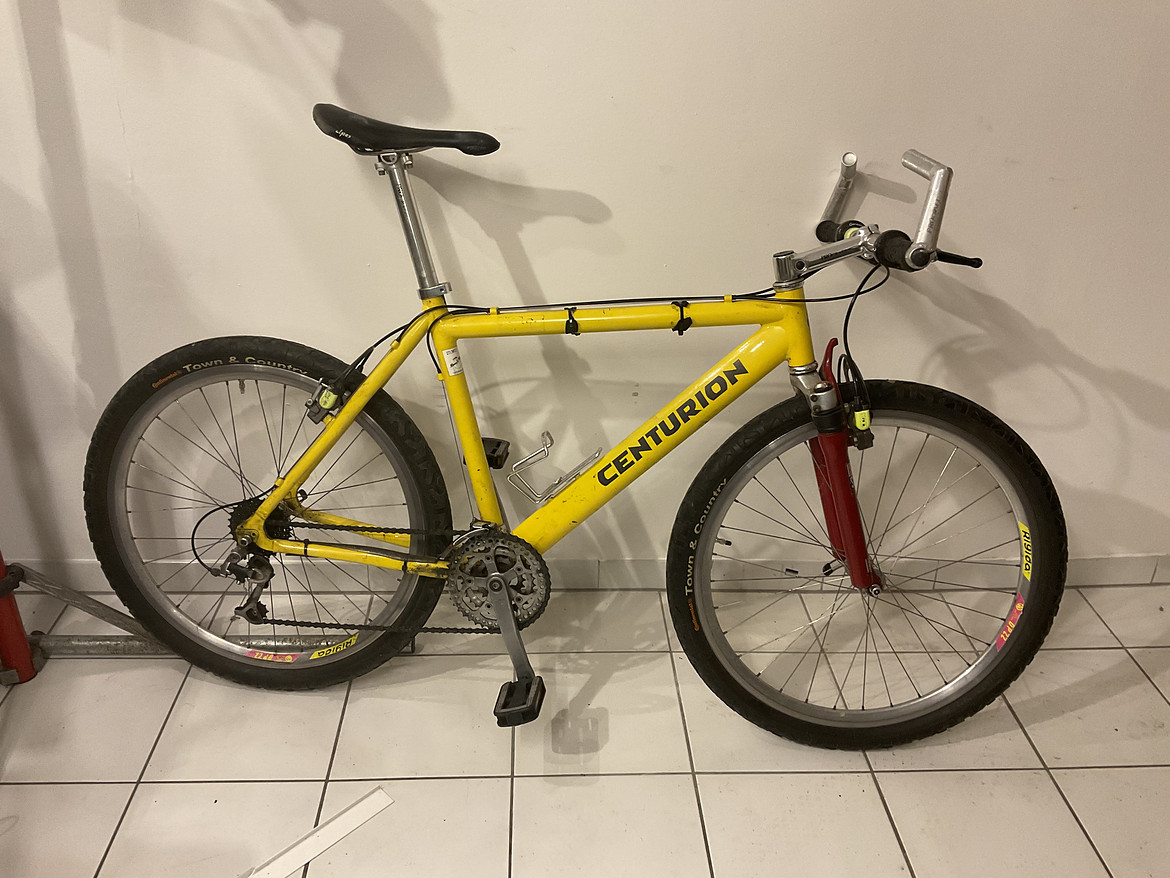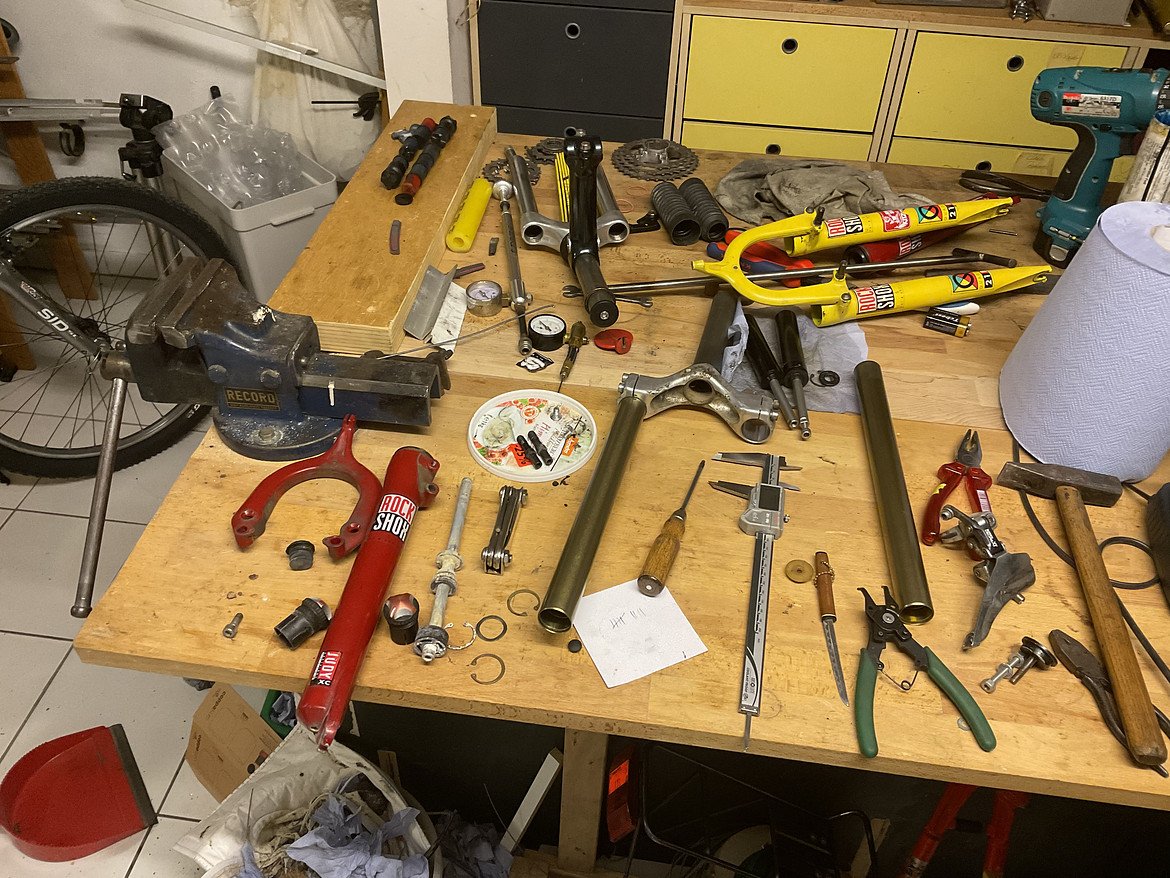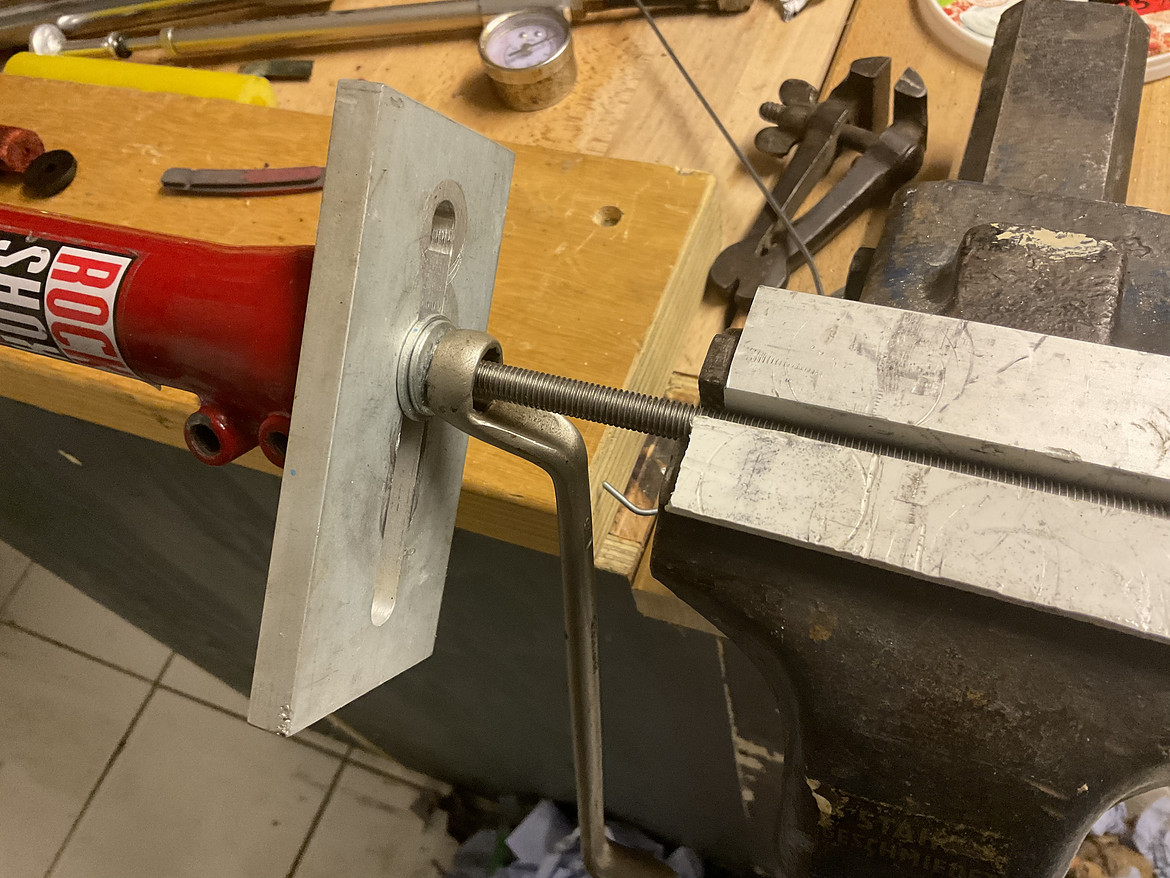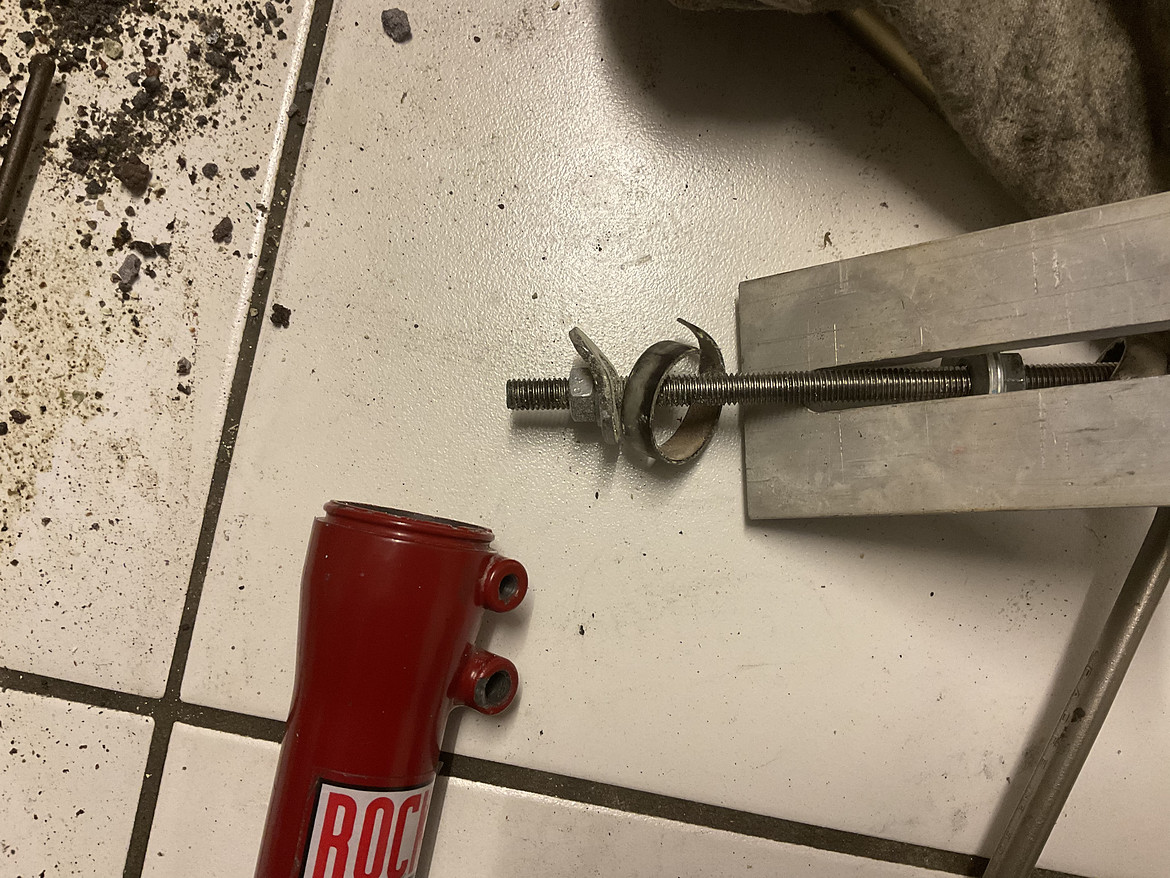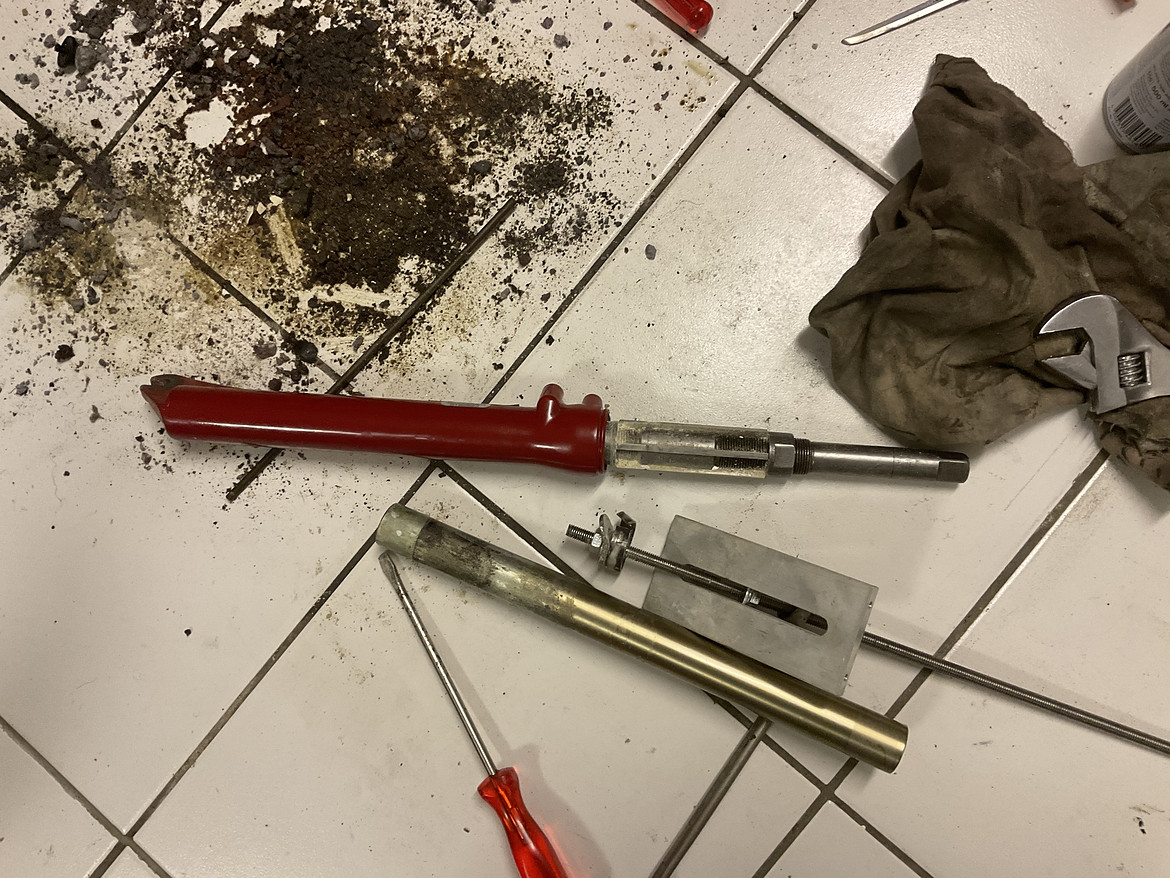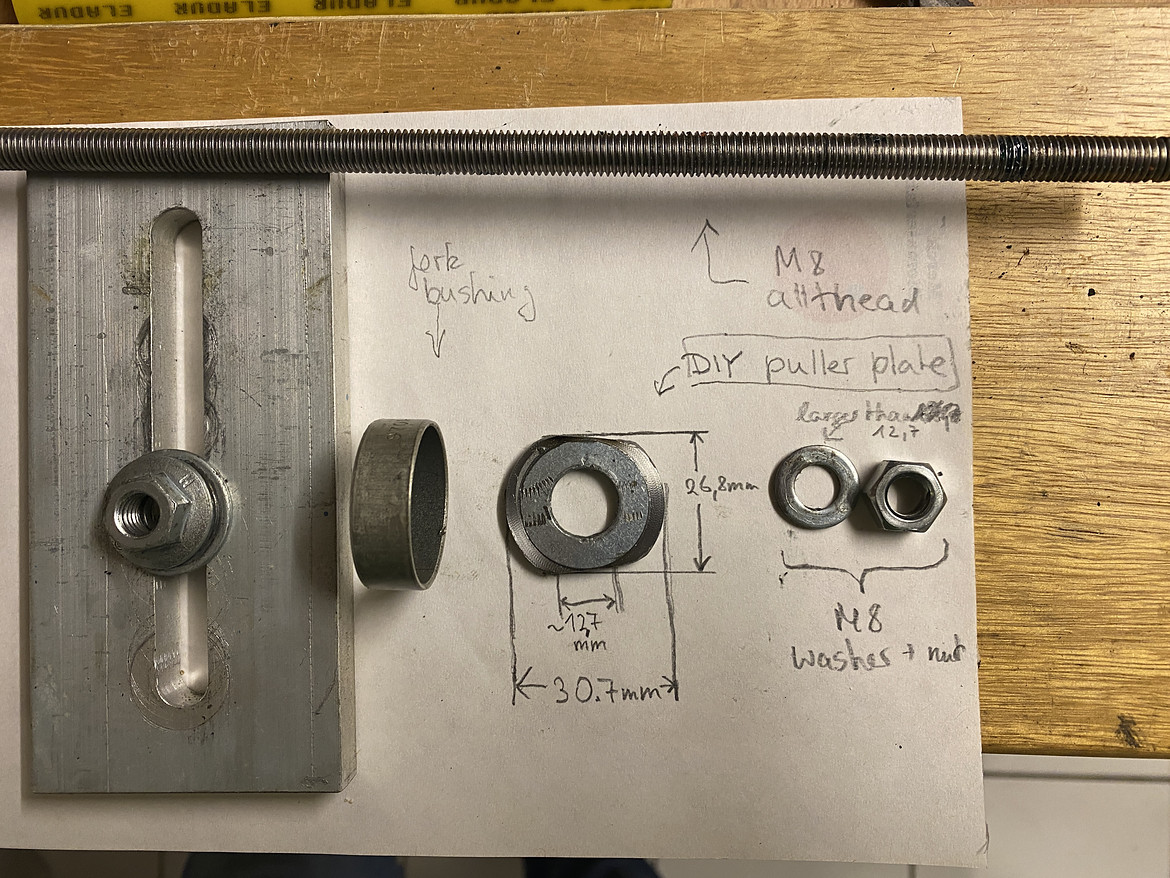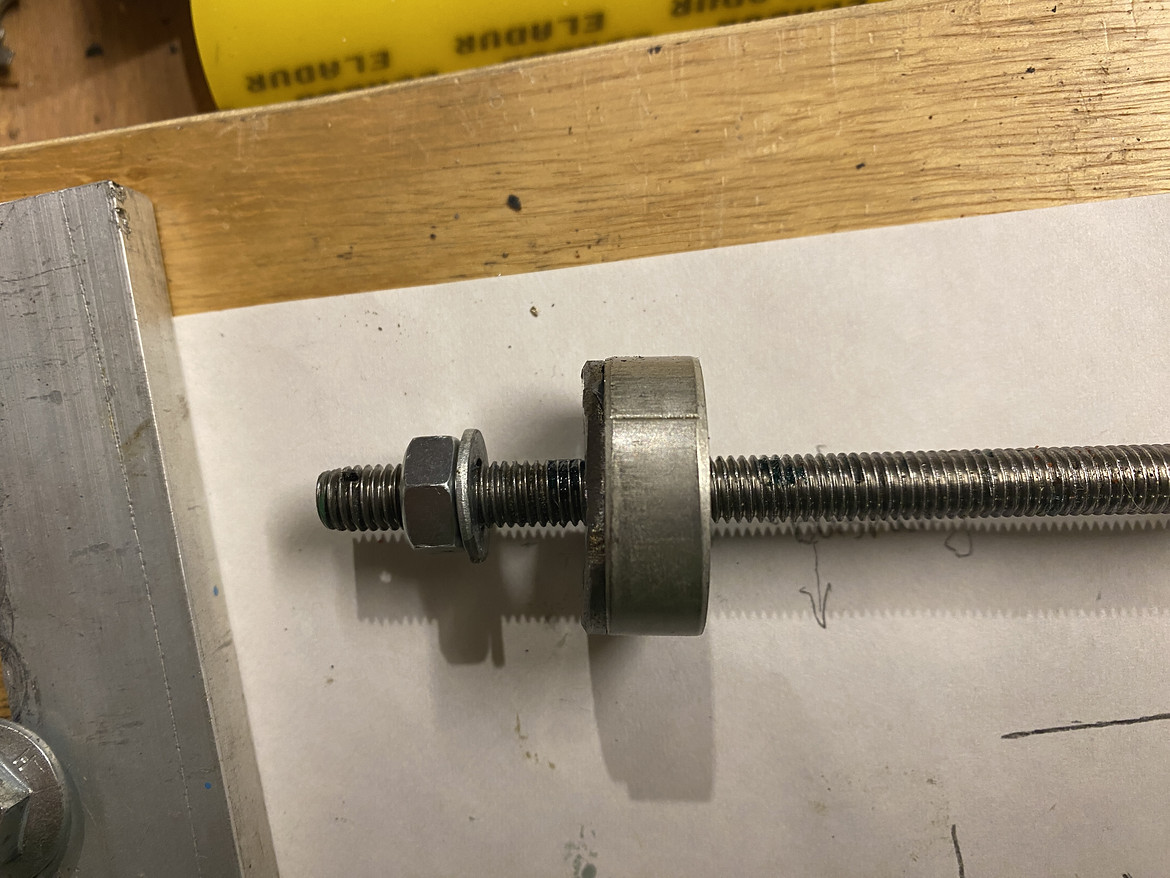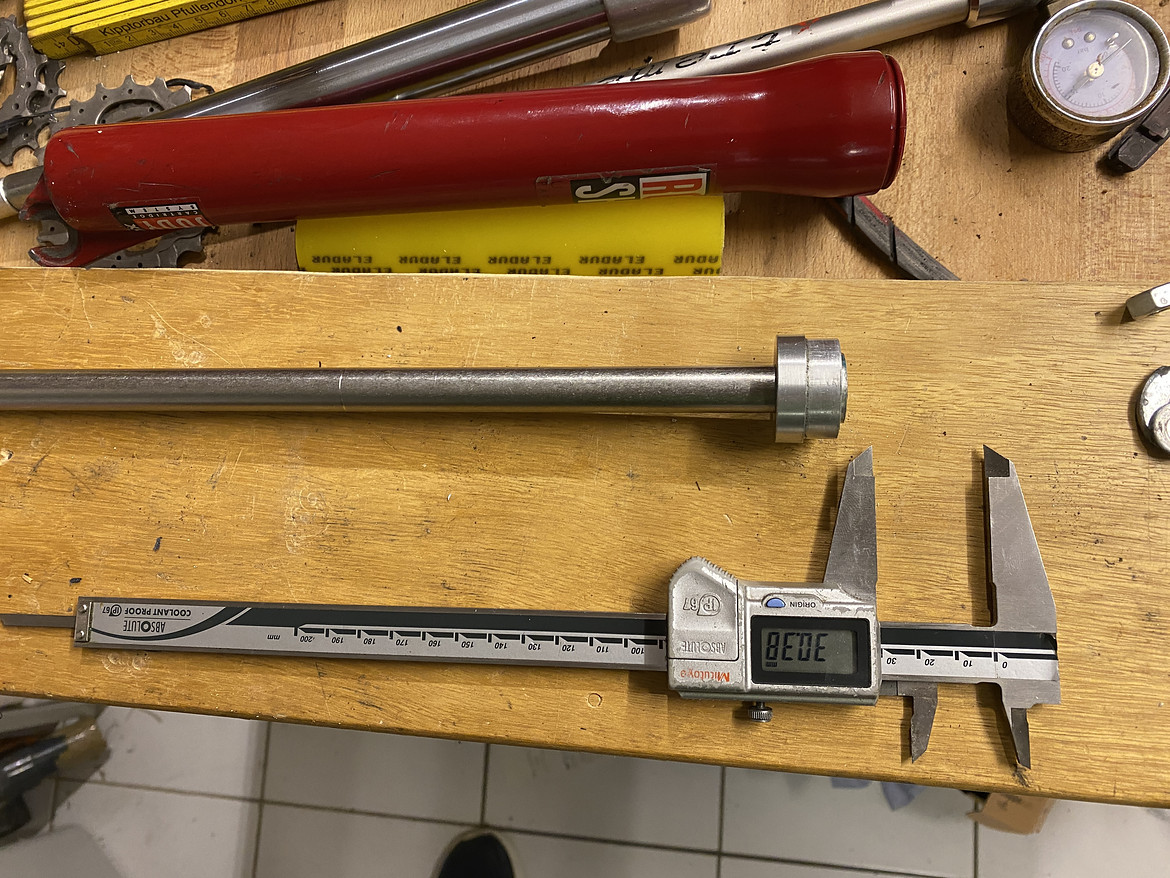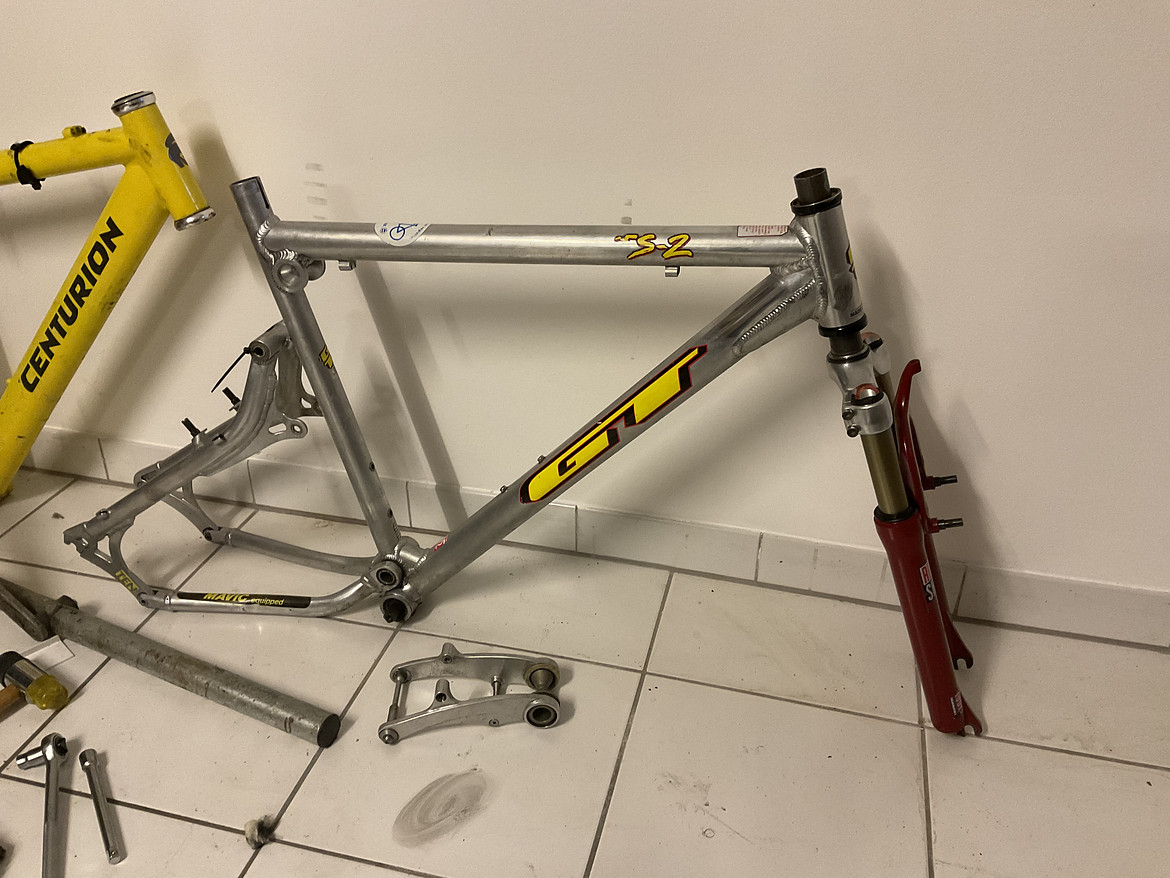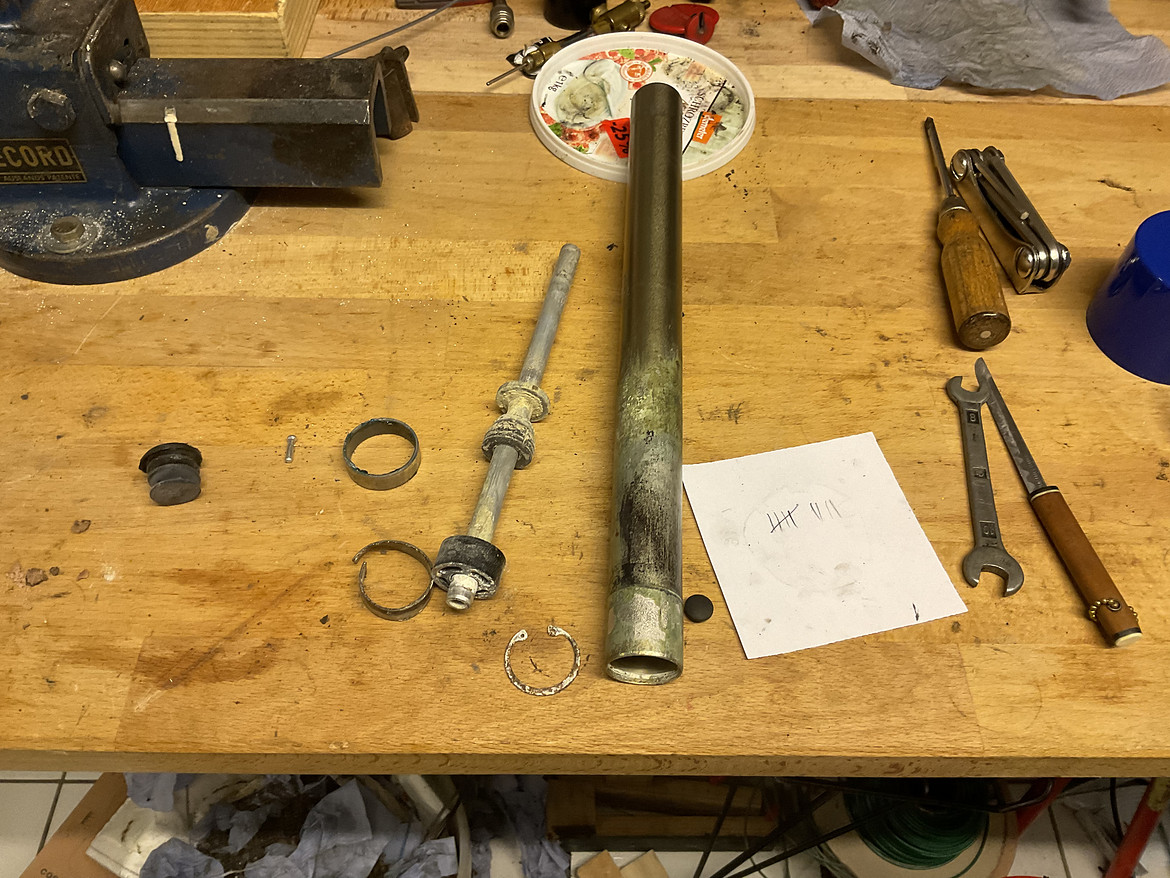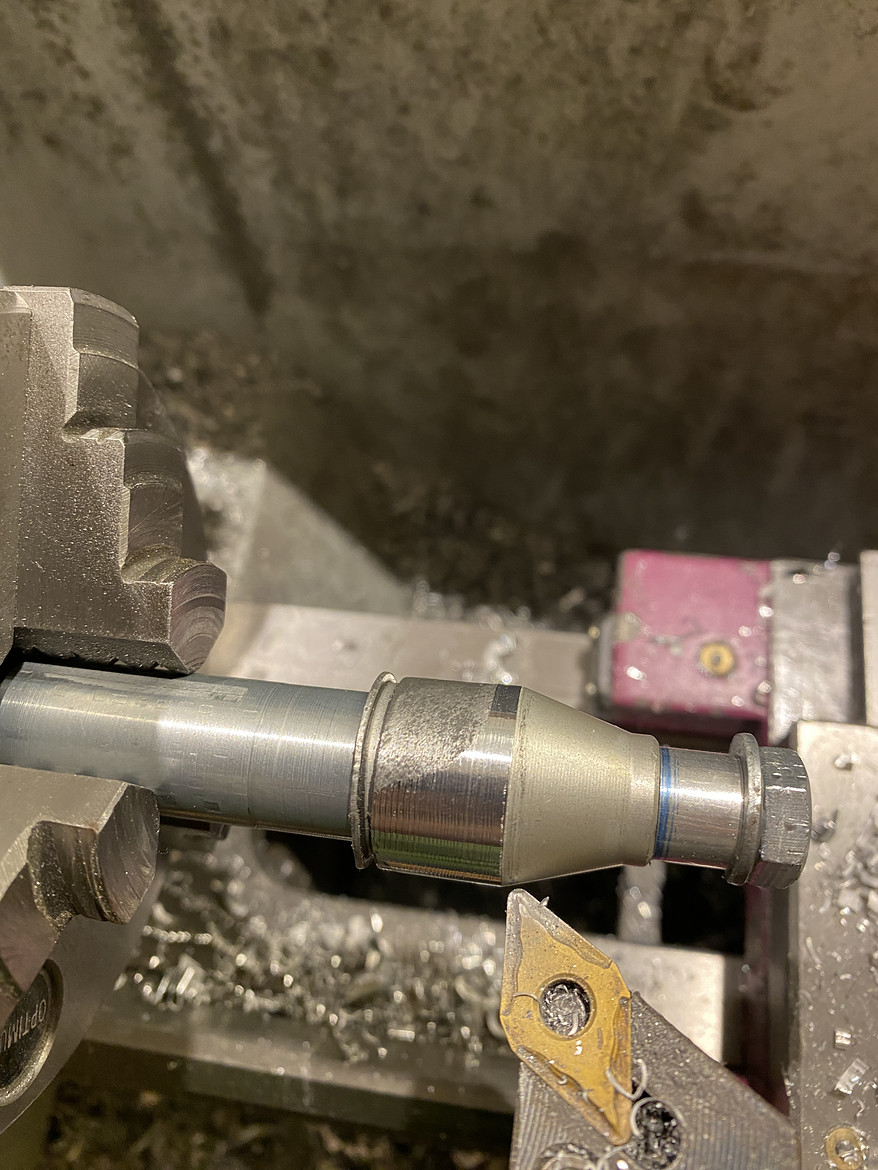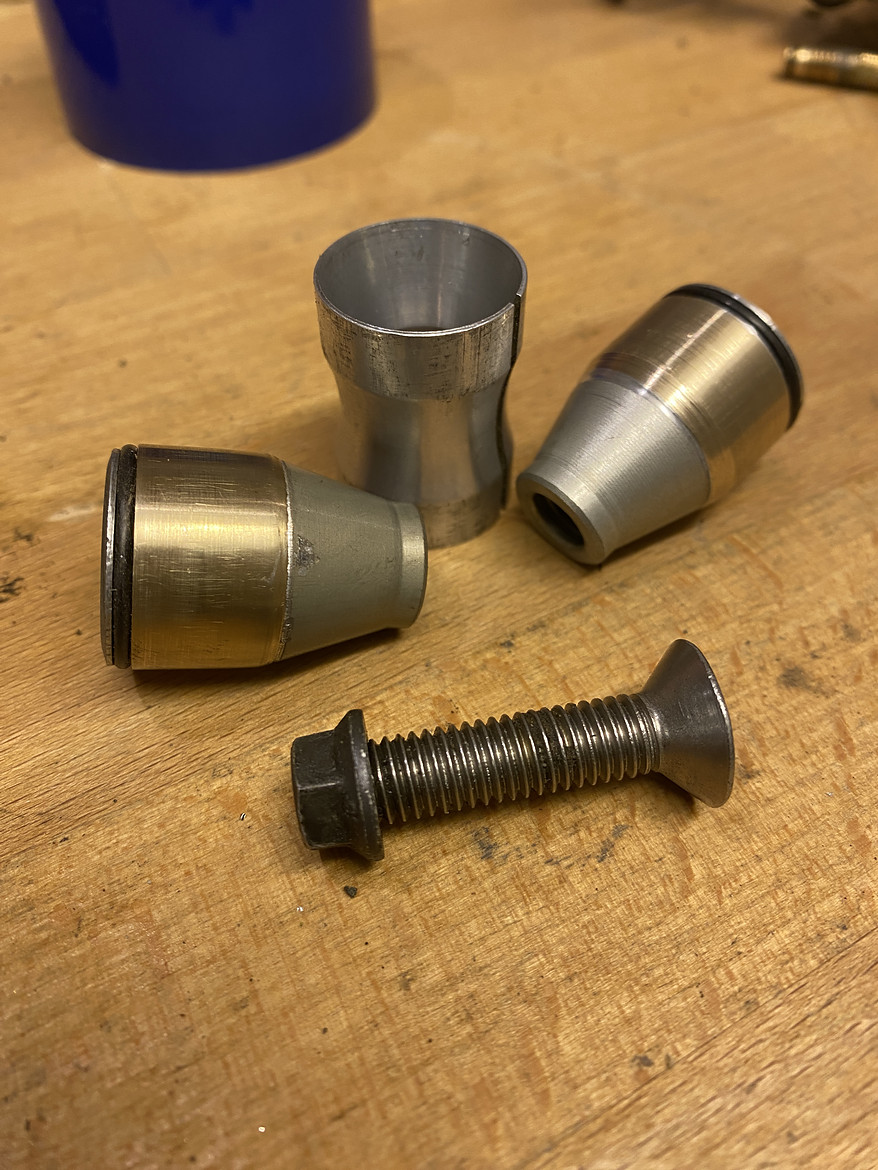Thias
Klein Fan
I have too many bikes! Really.
Now there will be one more, I guess. I'm having way too much fun...
As some may have seen, I'm currently building my LTS Thermoplast.
It has a very wired defect at the rear axle mount. It looks like someone has drilled or filed the slot for the axle. And while it's still possible to mount the rear wheel correctly, it's a hassle to adjust the position every time. And it's also "unworthy" for such a nice frame. So I was scouring the usual spots for a donor frame. I have been for the last few years. And now, finally, one came up. It was ratcher cheap so I snatched it.
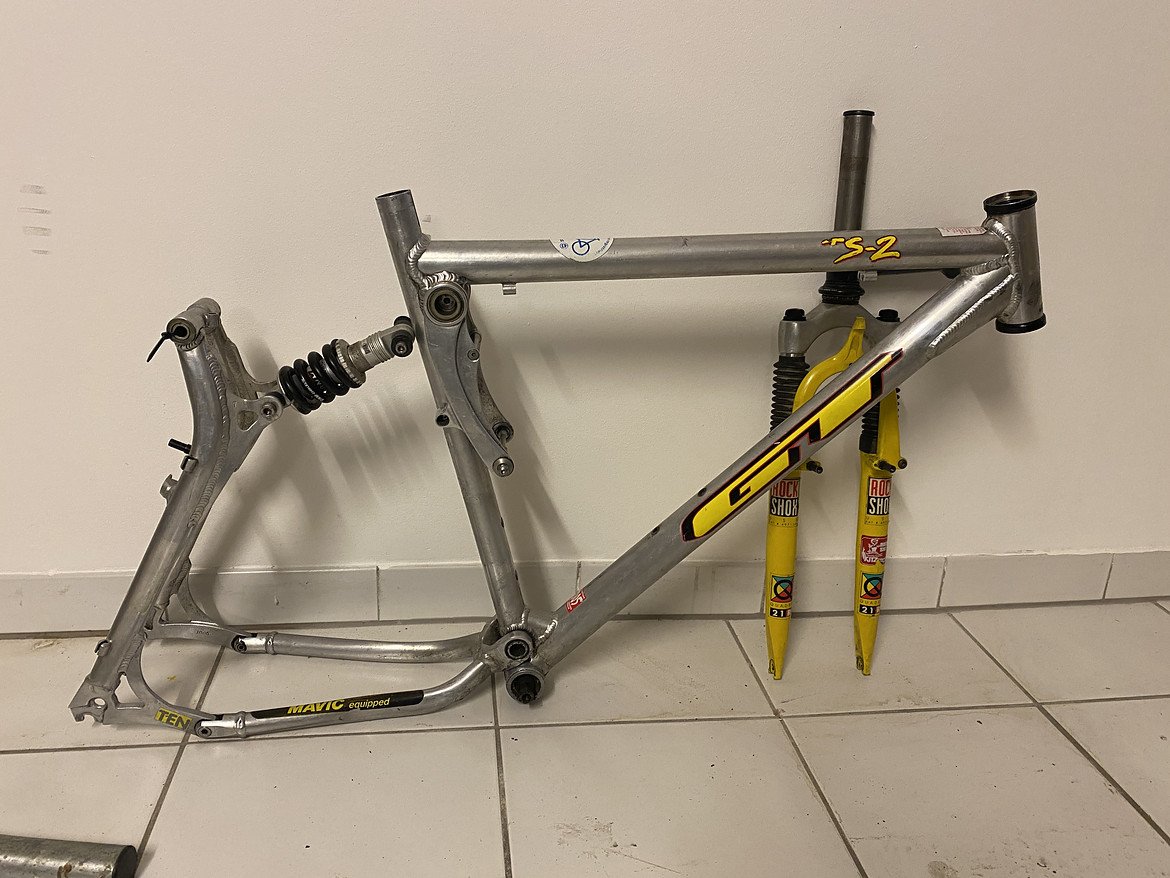
This is how it came. BB and original RS Quadra 21R forks. The bushings, especially the one near the bb are shot. But the metal parts are fine. No cracks, no major dents.
Looking at the sad thing, I made the decision to make it my next project.
It beeing a GT, I'm sure it will be really nice when polished. I'm already looking forward to it.
Now there will be one more, I guess. I'm having way too much fun...
As some may have seen, I'm currently building my LTS Thermoplast.
It has a very wired defect at the rear axle mount. It looks like someone has drilled or filed the slot for the axle. And while it's still possible to mount the rear wheel correctly, it's a hassle to adjust the position every time. And it's also "unworthy" for such a nice frame. So I was scouring the usual spots for a donor frame. I have been for the last few years. And now, finally, one came up. It was ratcher cheap so I snatched it.

This is how it came. BB and original RS Quadra 21R forks. The bushings, especially the one near the bb are shot. But the metal parts are fine. No cracks, no major dents.
Looking at the sad thing, I made the decision to make it my next project.
It beeing a GT, I'm sure it will be really nice when polished. I'm already looking forward to it.
Last edited:
